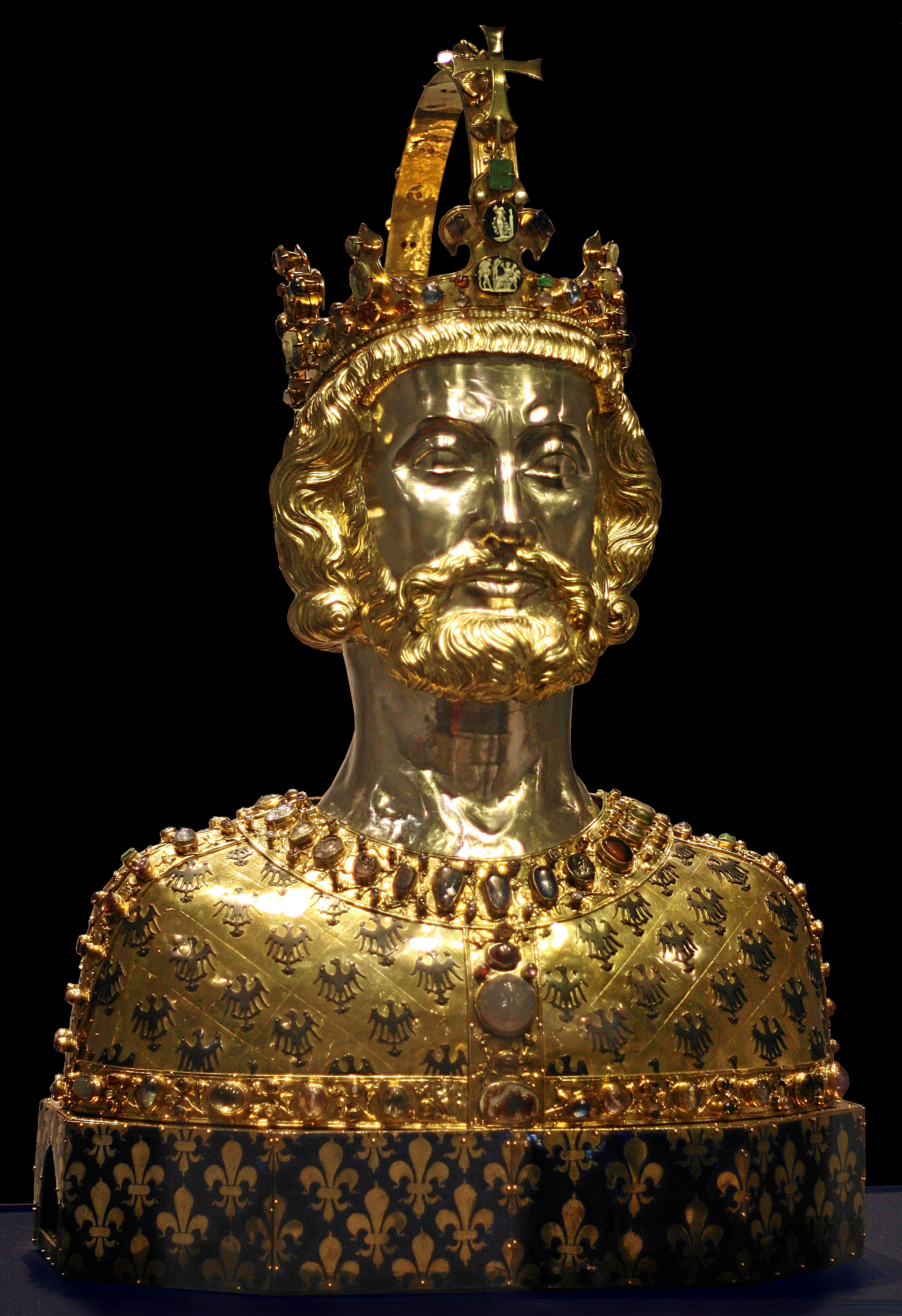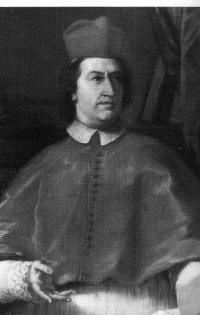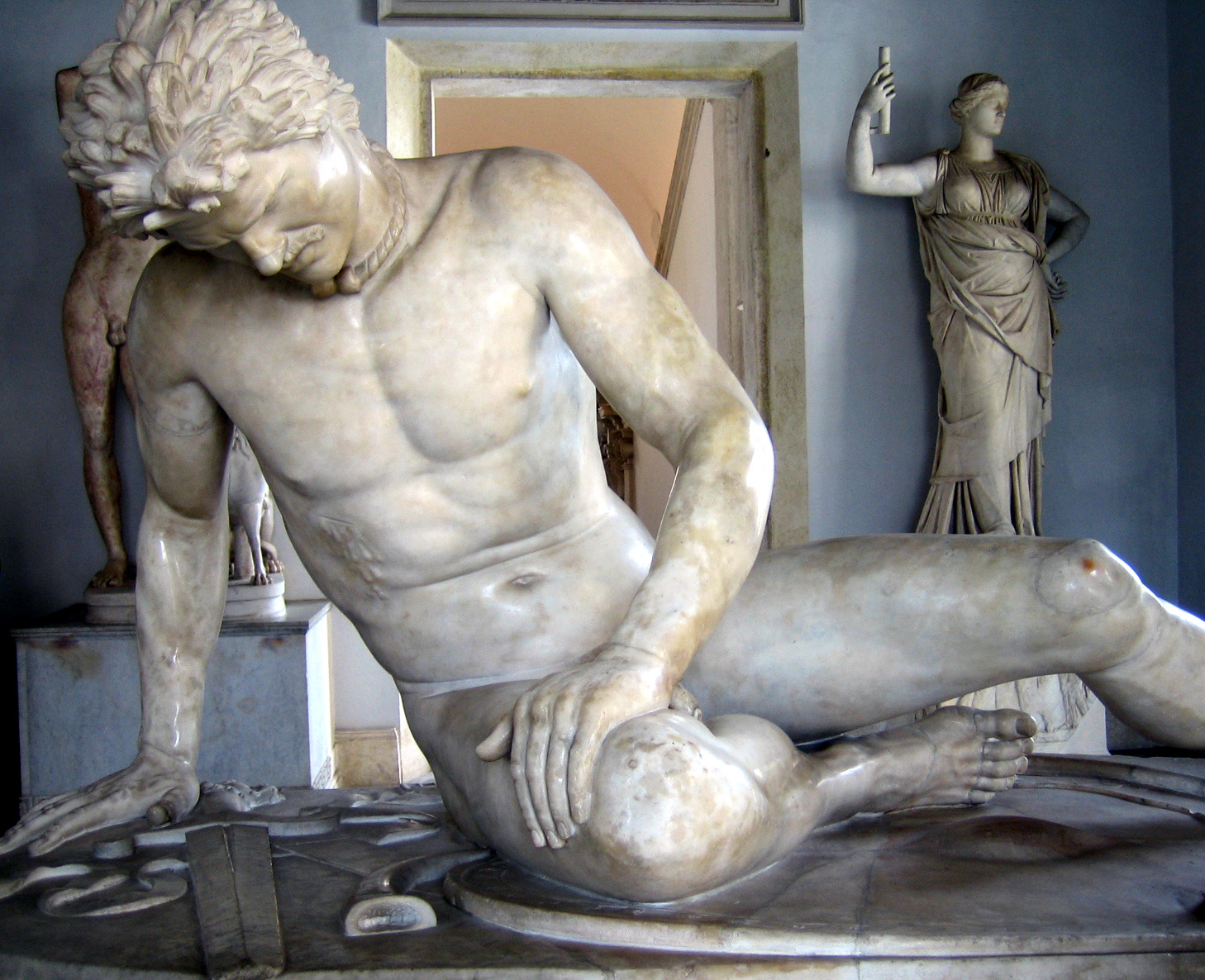|
Equestrian Statue Of Charlemagne (Cornacchini)
The ''Equestrian statue of Charlemagne'' (1725), which portrays the Holy Roman Emperor Charlemagne (742–814), was commissioned by Pope Clement XI (1649–1721) and carved by the Italian artist Agostino Cornacchini (1686–1754). It stands to the left of the portico of St Peter's Basilica. See also * Iconography of Charlemagne The rich iconography of Charlemagne is a reflection of Charlemagne's special position in Europe's collective memory, as the greatest of the Frankish kings, first Holy Roman Emperor, unifier of Western Europe, protector of the Catholic Church, prom ... References External links * http://stpetersbasilica.info/Statues/Charlemagne/Charlemagne.htm Sculptures in Vatican City Cultural depictions of Charlemagne Apostolic Palace Sculptures of men Equestrian statues Monuments and memorials in Europe 1725 works {{VaticanCity-sculpture-stub ... [...More Info...] [...Related Items...] OR: [Wikipedia] [Google] [Baidu] |
Agostino Cornacchini
Agostino Cornacchini (August 27, 1686 – 1754) was an Italian sculptor and painter of the Rococo period, active mainly in Rome. He was born in Pescia and died in Rome. In 1712, Cornacchini established himself in the household of his uncle, Cardinal Carlo Agostino Fabbroni, who until 1720 provided Cornacchini with a studio, lodgings and an income. His masterpiece is the '' equestrian statue of Charlemagne'' at the base of the Scala Regia on the entrance to the Vatican Palace, which sits opposite Bernini's equestrian Constantine. His works can also be found in Orvieto Cathedral and in the Basilica of Superga in Turin. File:Agostino cornacchini, endimione dormiente, 1716.jpg, ''Sleeping Endymion'', 1716, Cleveland Museum of Art File:Agostino cornacchini, natività, 1712-20 ca. 02.jpg, ''Nativity'', 1712–20, Biblioteca Fabroniana, Pistoia File:Duomo di orvieto, cappella del corporale 03 agostino cornacchini, arcangelo michele (1729).JPG, ''Archangel Michael'', 1729, Orvieto Cath ... [...More Info...] [...Related Items...] OR: [Wikipedia] [Google] [Baidu] |
Charlemagne
Charlemagne ( , ) or Charles the Great ( la, Carolus Magnus; german: Karl der Große; 2 April 747 – 28 January 814), a member of the Carolingian dynasty, was King of the Franks from 768, King of the Lombards from 774, and the first Emperor of the Romans from 800. Charlemagne succeeded in uniting the majority of western and central Europe and was the first recognized emperor to rule from western Europe after the fall of the Western Roman Empire around three centuries earlier. The expanded Frankish state that Charlemagne founded was the Carolingian Empire. He was canonized by Antipope Paschal III—an act later treated as invalid—and he is now regarded by some as beatified (which is a step on the path to sainthood) in the Catholic Church. Charlemagne was the eldest son of Pepin the Short and Bertrada of Laon. He was born before their canonical marriage. He became king of the Franks in 768 following his father's death, and was initially co-ruler with his brother ... [...More Info...] [...Related Items...] OR: [Wikipedia] [Google] [Baidu] |
St Peter's Basilica
The Papal Basilica of Saint Peter in the Vatican ( it, Basilica Papale di San Pietro in Vaticano), or simply Saint Peter's Basilica ( la, Basilica Sancti Petri), is a church built in the Renaissance style located in Vatican City, the papal enclave that is within the city of Rome, Italy. It was initially planned by Pope Nicholas V and then Pope Julius II to replace the aging Old St. Peter's Basilica, which was built in the fourth century by Roman emperor Constantine the Great. Construction of the present basilica began on 18 April 1506 and was completed on 18 November 1626. Designed principally by Donato Bramante, Michelangelo, Carlo Maderno and Gian Lorenzo Bernini, St. Peter's is the most renowned work of Renaissance architecture and the largest church in the world by interior measure. While it is neither the mother church of the Catholic Church nor the cathedral of the Diocese of Rome (these equivalent titles being held by the Archbasilica of Saint John Lat ... [...More Info...] [...Related Items...] OR: [Wikipedia] [Google] [Baidu] |
Vatican City
Vatican City (), officially the Vatican City State ( it, Stato della Città del Vaticano; la, Status Civitatis Vaticanae),—' * german: Vatikanstadt, cf. '—' (in Austria: ') * pl, Miasto Watykańskie, cf. '—' * pt, Cidade do Vaticano—' * es, Ciudad del Vaticano—' is an independent city-state, microstate and enclave within Rome, Italy. Also known as The Vatican, the state became independent from Italy in 1929 with the Lateran Treaty, and it is a distinct territory under "full ownership, exclusive dominion, and sovereign authority and jurisdiction" of the Holy See, itself a sovereign entity of international law, which maintains the city state's temporal, diplomatic, and spiritual independence. With an area of and a 2019 population of about 453, it is the smallest state in the world both by area and population. As governed by the Holy See, Vatican City State is an ecclesiastical or sacerdotal- monarchical state ruled by the Pope who is the bishop of Rome ... [...More Info...] [...Related Items...] OR: [Wikipedia] [Google] [Baidu] |
Pope Clement XI
Pope Clement XI ( la, Clemens XI; it, Clemente XI; 23 July 1649 – 19 March 1721), born Giovanni Francesco Albani, was head of the Catholic Church and ruler of the Papal States from 23 November 1700 to his death in March 1721. Clement XI was a patron of the arts and of science. He was also a great benefactor of the Vatican Library; his interest in archaeology is credited with saving much of Rome's antiquity. He authorized expeditions which succeeded in rediscovering various ancient Christian writings and authorized excavations of the Roman catacombs. Biography Early life Giovanni Francesco Albani was born in 1649 in Urbino to the Albani family, a distinguished family of Albanian origin in central Italy. His mother Elena Mosca (1630-1698) was a high-standing Italian of bergamasque origin, descended from the noble Mosca family of Pesaro. His father Carlo Albani (1623-1684) was a patrician. His mother descended in part from the Staccoli family, who were patricians of U ... [...More Info...] [...Related Items...] OR: [Wikipedia] [Google] [Baidu] |
Italy
Italy ( it, Italia ), officially the Italian Republic, ) or the Republic of Italy, is a country in Southern Europe. It is located in the middle of the Mediterranean Sea, and its territory largely coincides with the homonymous geographical region. Italy is also considered part of Western Europe, and shares land borders with France, Switzerland, Austria, Slovenia and the enclaved microstates of Vatican City and San Marino. It has a territorial exclave in Switzerland, Campione. Italy covers an area of , with a population of over 60 million. It is the third-most populous member state of the European Union, the sixth-most populous country in Europe, and the tenth-largest country in the continent by land area. Italy's capital and largest city is Rome. Italy was the native place of many civilizations such as the Italic peoples and the Etruscans, while due to its central geographic location in Southern Europe and the Mediterranean, the country has also historically b ... [...More Info...] [...Related Items...] OR: [Wikipedia] [Google] [Baidu] |
Iconography Of Charlemagne
The rich iconography of Charlemagne is a reflection of Charlemagne's special position in Europe's collective memory, as the greatest of the Frankish kings, first Holy Roman Emperor, unifier of Western Europe, protector of the Catholic Church, promoter of education and of the Carolingian Renaissance, fictional precursor of the crusades, one of the Nine Worthies, a (contested) Saint, and a national icon in Andorra, Belgium, France and Germany. Appearance The ''Vita Karoli Magni'' written after Charlemagne's death by his servant Einhard has served ever since as a reference establishing his stature and charisma: Beard Contemporaneous depictions of Charlemagne and related rulers suggest he sported a mustache, but not a beard. The motif of Charlemagne's beard appears in 11th-century ''chansons de geste'' and especially ''the Song of Roland'', which has a verse describing Charlemagne: ''"Blanche ad la barbe et tut flurit le chef"'', which translates as "his beard is white, and all ... [...More Info...] [...Related Items...] OR: [Wikipedia] [Google] [Baidu] |
Footnotes
A note is a string of text placed at the bottom of a page in a book or document or at the end of a chapter, volume, or the whole text. The note can provide an author's comments on the main text or citations of a reference work in support of the text. Footnotes are notes at the foot of the page while endnotes are collected under a separate heading at the end of a chapter, volume, or entire work. Unlike footnotes, endnotes have the advantage of not affecting the layout of the main text, but may cause inconvenience to readers who have to move back and forth between the main text and the endnotes. In some editions of the Bible, notes are placed in a narrow column in the middle of each page between two columns of biblical text. Numbering and symbols In English, a footnote or endnote is normally flagged by a superscripted number immediately following that portion of the text the note references, each such footnote being numbered sequentially. Occasionally, a number between bracke ... [...More Info...] [...Related Items...] OR: [Wikipedia] [Google] [Baidu] |
Sculptures In Vatican City
Sculpture is the branch of the visual arts that operates in three dimensions. Sculpture is the three-dimensional art work which is physically presented in the dimensions of height, width and depth. It is one of the plastic arts. Durable sculptural processes originally used carving (the removal of material) and modelling (the addition of material, as clay), in stone, metal, ceramics, wood and other materials but, since Modernism, there has been an almost complete freedom of materials and process. A wide variety of materials may be worked by removal such as carving, assembled by welding or modelling, or moulded or cast. Sculpture in stone survives far better than works of art in perishable materials, and often represents the majority of the surviving works (other than pottery) from ancient cultures, though conversely traditions of sculpture in wood may have vanished almost entirely. However, most ancient sculpture was brightly painted, and this has been lost. [...More Info...] [...Related Items...] OR: [Wikipedia] [Google] [Baidu] |
Cultural Depictions Of Charlemagne
Culture () is an umbrella term which encompasses the social behavior, institutions, and norms found in human societies, as well as the knowledge, beliefs, arts, laws, customs, capabilities, and habits of the individuals in these groups.Tylor, Edward. (1871). Primitive Culture. Vol 1. New York: J.P. Putnam's Son Culture is often originated from or attributed to a specific region or location. Humans acquire culture through the learning processes of enculturation and socialization, which is shown by the diversity of cultures across societies. A cultural norm codifies acceptable conduct in society; it serves as a guideline for behavior, dress, language, and demeanor in a situation, which serves as a template for expectations in a social group. Accepting only a monoculture in a social group can bear risks, just as a single species can wither in the face of environmental change, for lack of functional responses to the change. Thus in military culture, valor is counted a typical ... [...More Info...] [...Related Items...] OR: [Wikipedia] [Google] [Baidu] |
Apostolic Palace
The Apostolic Palace ( la, Palatium Apostolicum; it, Palazzo Apostolico) is the official residence of the pope, the head of the Catholic Church, located in Vatican City. It is also known as the Papal Palace, the Palace of the Vatican and the Vatican Palace. The Vatican itself refers to the building as the Palace of Sixtus V, in honor of Pope Sixtus V, who built most of the present form of the palace. The building contains the papal apartments, various offices of the Catholic Church and the Holy See, private and public chapels, Vatican Museums, and the Vatican Library, including the Sistine Chapel, Raphael Rooms, and Borgia Apartment. The modern tourist can see these last and other parts of the palace, but other parts, such as the Sala Regia (Regal Room) and Cappella Paolina, had long been closed to tourists, though the Sala Regia allowed occasional tourism by 2019. The Scala Regia (Regal Staircase) can be viewed from one end and used to enter the Sala Regia. The Cappe ... [...More Info...] [...Related Items...] OR: [Wikipedia] [Google] [Baidu] |
Sculptures Of Men
Sculpture is the branch of the visual arts that operates in three dimensions. Sculpture is the three-dimensional art work which is physically presented in the dimensions of height, width and depth. It is one of the plastic arts. Durable sculptural processes originally used carving (the removal of material) and modelling (the addition of material, as clay), in stone, metal, ceramics, wood and other materials but, since Modernism, there has been an almost complete freedom of materials and process. A wide variety of materials may be worked by removal such as carving, assembled by welding or modelling, or moulded or cast. Sculpture in stone survives far better than works of art in perishable materials, and often represents the majority of the surviving works (other than pottery) from ancient cultures, though conversely traditions of sculpture in wood may have vanished almost entirely. However, most ancient sculpture was brightly painted, and this has been lost. [...More Info...] [...Related Items...] OR: [Wikipedia] [Google] [Baidu] |







